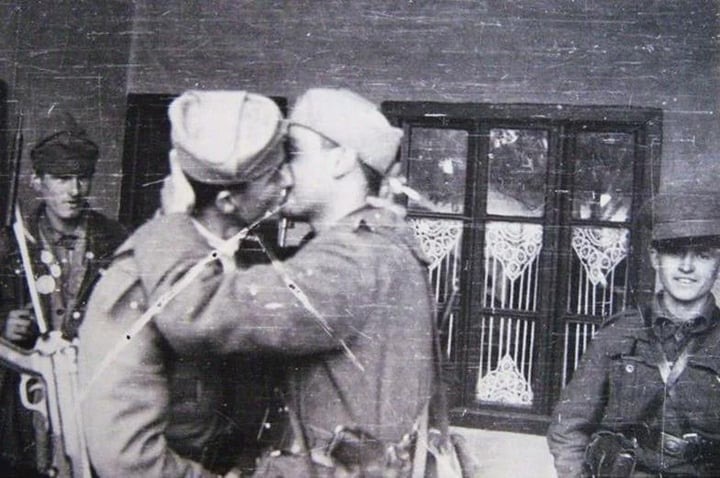And then there was the journalist Hans Barth, a correspondent for the Berliner Tageblatt in Rome, who first published an anti-Armenian article in the journal Zukunft and then shortly afterward the book Turk Defend Yourself (1898). Both were motivated by what he understood as “anti-Turkish agitation” in the German press. His book went through many editions (and a recent Turkish version dates from 2003).⁶³
Herein this “Dr.” Barth justified massacres of the Armenians, peddled anti-Semitic stereotypes, attacked the Christian religion, and exhibited essentialist racism (including such claims as that Africans can never be Christians).⁶⁴
At first glance Barth’s may appear to have been a fringe discourse, with its coarsely yelled hate, but its racialist arguments and even much of its style would become part of the mainstream and be faithfully replicated in public (newspaper) discourse for three decades to come.⁶⁵
Already the very first sentence of Barth’s book contained its whole theme: the Armenians and Greeks had been incited against the “noble and tolerant” Turks, who had then reacted, which in turn had, in Europe, led to calls for a crusade.⁶⁶
In many variations and from many sources Barth printed one disparaging remark and anti-Armenian claim after the other: that the Christians of the Ottoman Empire were culturally inferior to the non-Christians, that everyone who had contact with the Armenians learned to hate them, that they sucked the life out of the Turks, that they held all the main property and capital, and that they were merchants and traders of the most superior abilities—and, as he insinuated throughout the book, that they were even worse than the Jews.⁶⁷
Not surprisingly, Barth also reproduced, more than once, (now familiar) anti-Armenian clichés: “A Greek betrays two Jews, an Armenian two Greeks.” Like the Post newspaper at the time of the horrors (as we saw in Chapter 2), he approvingly reproduced passages on the Armenians from Alfred Körte’s popular travel book: the Armenians were so devious that not even a contract with them helped; every kind of fraud was a sport to them; and Armenian merchants were “leeches,” who filled up on the blood of their victims and then moved on to the next town.⁶⁸
Barth was mainly writing against Lepsius and his Armenia and Europe, which he called a “Lepsiade,” “part missionary tractate, part pulp fiction.”⁶⁹ To this “absurd concoction” Barth had mainly one thing to say: “Requiescat in pace” (Latin, rest in peace).⁷⁰ There was nothing, he wrote, more “unjust, stupid, and disgusting” in modern history than the sympathy in Europe for the Armenians—a sentiment later expressed by Hitler in similar words.⁷¹
Not surprisingly, for Barth the massacres of 1894–1896 were simply unjustified rebellions that had been justly suppressed. And of course it was all the fault of the other Great Powers—including the Americans (this was still rather a novelty in German anti-Armenian discourse, which had thus far largely ignored America’s rôle in the Middle East).⁷²
Barth also quoted what Ambassador Saurma had supposedly told the Constantinople correspondent of the Berliner Tageblatt, a colleague of Barth’s: that the Turks were within their rights to act as they did in 1894–1896; that the idea of Armenian reforms was neither justified nor executable; and, moreover, that the Armenians “had literally plundered Turkey for centuries” with “their ruthless and unashamed manner of acquisition.” They were, according to Saurma, “usurers and dishonest.”⁷³ Claims that, Barth implied, made killing them justifiable.
Throughout the book Barth spoke against the impossible and “stupid” idea of wanting a state for the spread-out and small Armenian minority.⁷⁴ “They would have done better to be content to fleece the poor, thoroughly honest, and diligent Turkish farmer and to settle as parasites in the fur of the pashas, as it has been from time immemorial.”⁷⁵
And in the now clearly established anti-Semitic images, for Barth, such a nonsensical Armenian state would be “an Eden populated only by usurers, brokers, bankers, and grocers.”⁷⁶
The Armenian uprising of 1894–1896, he claimed, was as ludicrous as if the “Frankfurt Jewry had, with the help of bombs, tried to carry out a putsch, transform the cathedral into a synagogue, and then crown Mr. Rothschild as King of New Jerusalem” in the Frankfurt town hall.⁷⁷ How could Armenian bankers have ever fallen for such schemes? Barth asked.
In his vision they had become so rich, spoiled, and carefree that it seemed like a good way to pamper their own vanity. In another telling analogy, he dismissed the idea of an Armenian state as just as absurd as the idea of “Israel wanting to raise the walls of Zion again.”⁷⁸
As we already saw in our discussion of the German antireform discourse, for Barth (and for some of the texts he cites, often the Berliner Tageblatt), any notions of liberty and (human) rights were dismissed as “the poison of freedom” when applied to the Armenians.⁷⁹
Here, the generally antidemocratic—as well as anti-American—tendencies of German nationalism at the time came to the fore. Robert College in Constantinople, the American college that was the precursor of today’s prestigious Bosporus University, was presented as a school for terrorists, a “bomb institute.”⁸⁰
Pro-Armenian writers were distraught that Barth’s theses found a ready ear in the German press and were widely and often quoted and reprinted.⁸¹ Even fifteen years later, in 1913, Barth’s book was still the subject of debate between him and the German pro-Armenian scene—along with a new article by him justifying the 1890s massacres, this time in the official weekly of the military, the Militärwochenblatt.⁸²
This fact alone—that the official weekly of the German army would print Barth’s justifications—was not a good omen for the coming war.
(Emphasis added. On a very minor note, it was appropriate that I was listening to this when I first read these paragraphs.)







